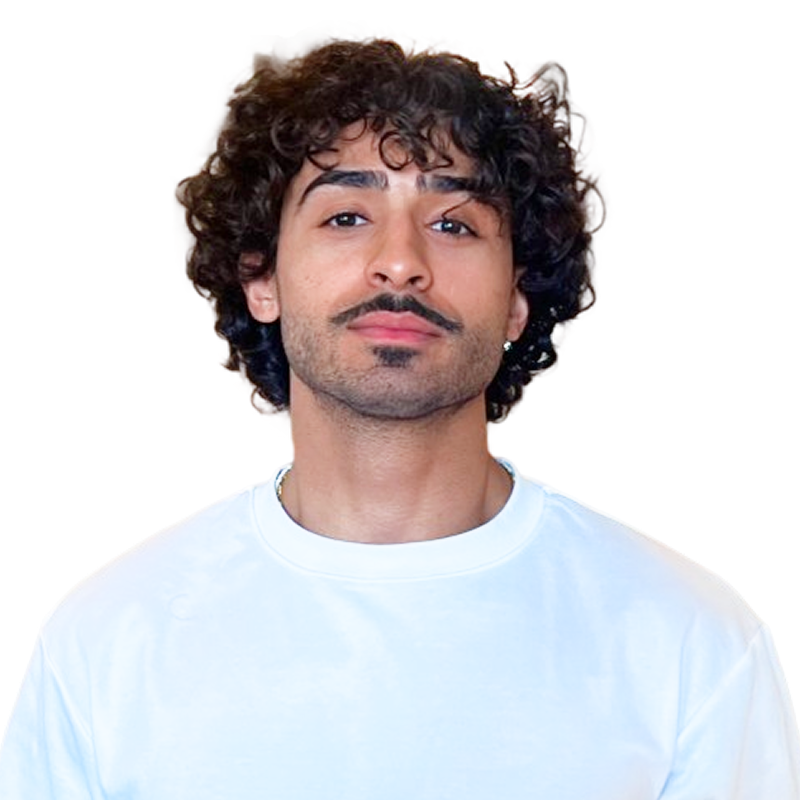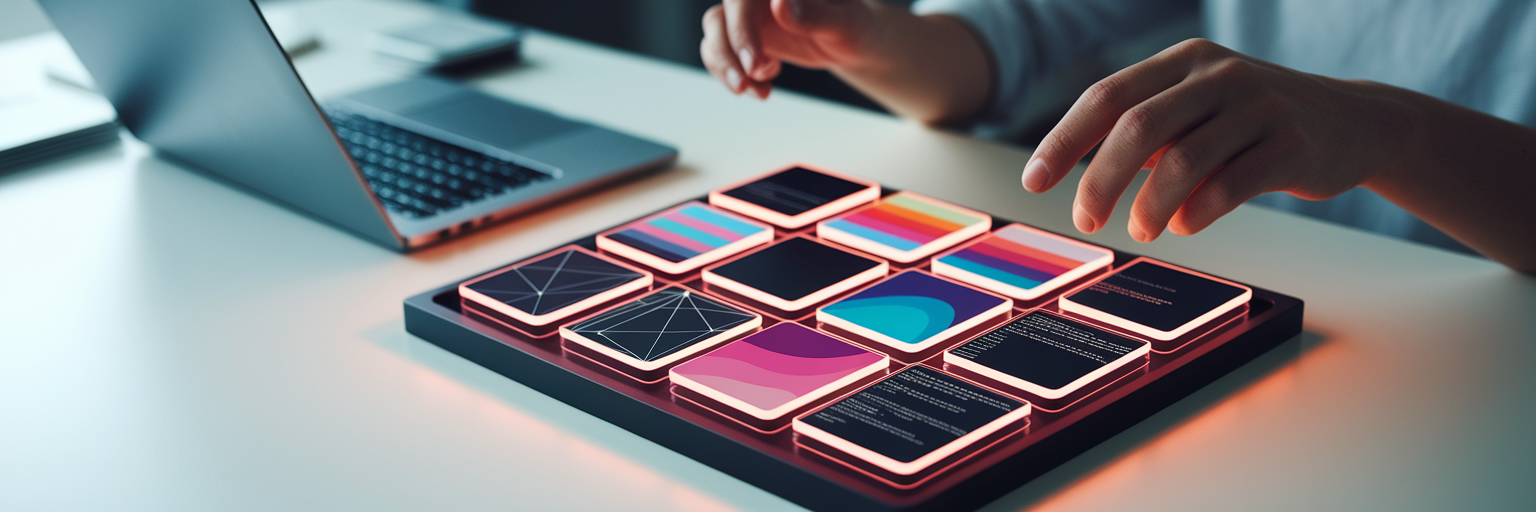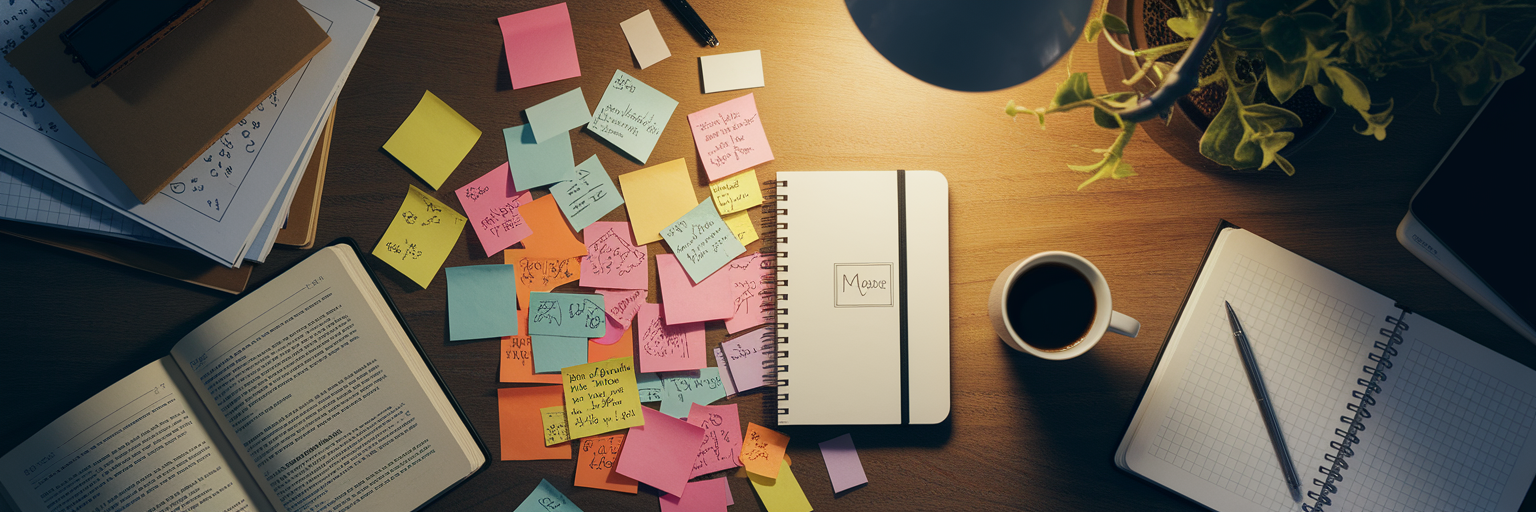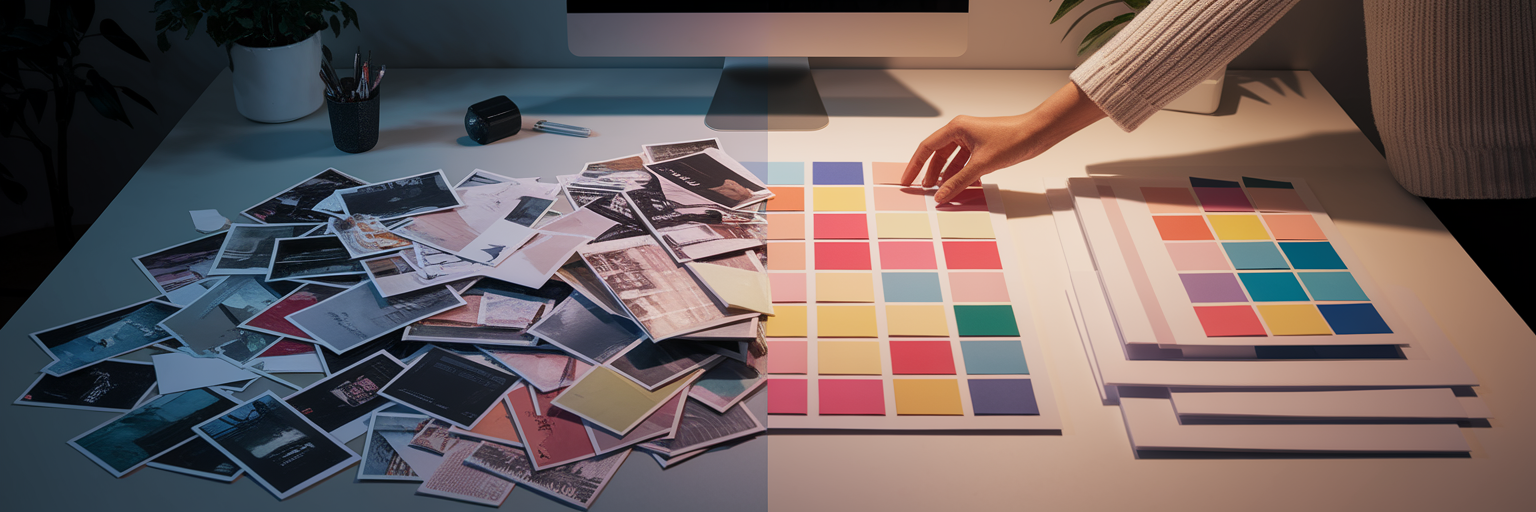Web design has traveled a long way from its origins as a platform for static, text-heavy pages. Today, a website’s value is measured by its ability to create an experience that captivates and immerses the user. The web design trends 2025 are pushing this boundary even further, transforming how teams collaborate and build digital products. This article explores how three key trends—immersive scrolling, AI-driven personalization, and integrated 3D web elements—are reshaping our creative workflows.
Mastering these techniques requires a new level of organization from the very start. Keeping track of inspiration and project assets is essential, and our blog is a great resource for staying ahead of the curve. Let's look at how the future of web design is taking shape.
Crafting Narratives with Immersive Scrolling
Think of immersive scrolling as more than just a fancy parallax effect. It’s a storytelling technique that turns a webpage into a cinematic journey. As a user scrolls, animations trigger, content layers reveal themselves, and a narrative unfolds. This technique, as highlighted in publications like Wired, transforms a simple webpage into a compelling narrative journey. We’ve all seen sites where scrolling feels like you’re moving through a beautifully directed film, and that’s the goal.
This shift has a profound impact on creative workflows. Designers can no longer hand off static mockups to developers. Instead, the process starts with storyboarding dynamic user flows, requiring tight collaboration between design and development from day one. It’s less about designing a single screen and more about choreographing an entire interactive sequence. This means creatives need to get comfortable with animation principles and tools like GSAP or visual development platforms.
A practical first step is to build a shared library of inspiration. Create a dedicated collection in Bookmarkify to save examples of exceptional scroll-based storytelling. This gives your team a common visual language and a well of ideas to draw from, much like the curated collections you can find on our inspiration page.
AI Personalization for Unique User Journeys
When we talk about AI personalization in web design, we're moving beyond basic product recommendations. Imagine a website that dynamically changes its layout, headlines, and even imagery based on who is visiting. This is achieved by leveraging user data to create a truly unique experience for every individual. The system might consider several factors:
- Browsing history and past interactions on the site
- Geographic location and local time
- The day of the week or specific time of day
- The type of device being used
This changes the designer's role significantly. Instead of creating a one-size-fits-all design, you become an architect of a flexible, component-based system. Your job is to define the rules and visual language that allow the AI to assemble a coherent and effective experience for different user segments. It’s a strategic role where you ensure brand consistency while allowing for endless variation. AI becomes a powerful collaborator, not a replacement for creative thinking.
To manage this complexity, start by organizing your design system with user personas in mind. Use Bookmarkify to create collections of components, inspiration, and content variations tailored to each persona. This ensures your creative vision remains clear and consistent, no matter how the AI adapts the final layout.
Adding Depth with Integrated 3D Elements
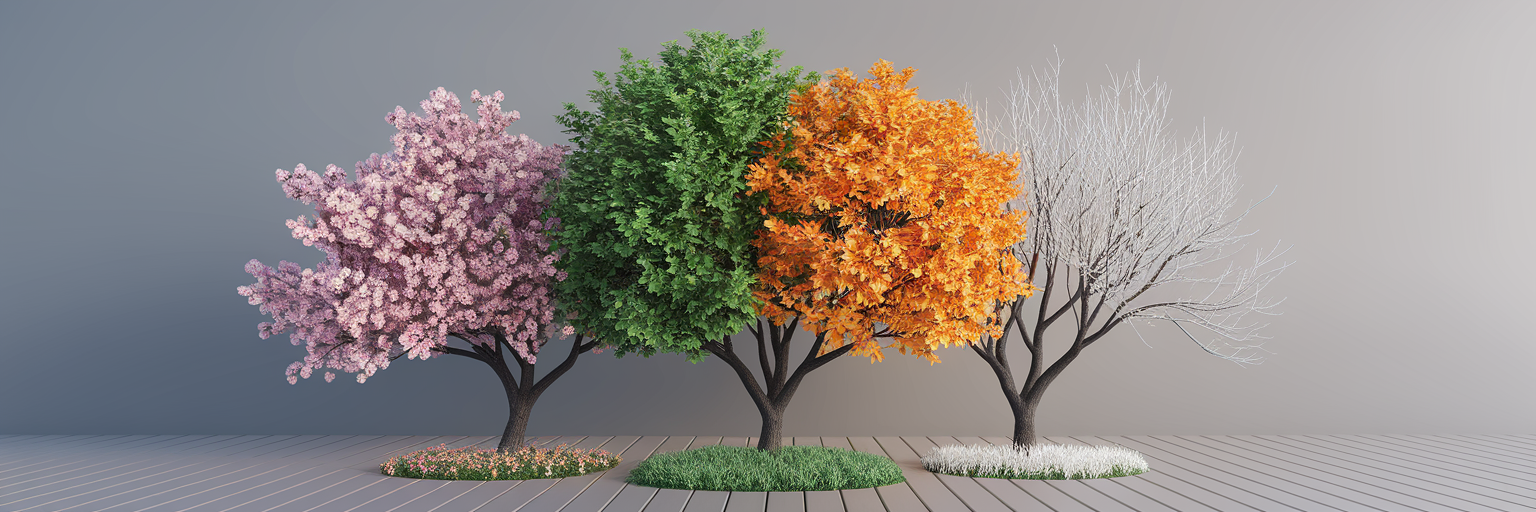
The integration of 3D web elements is another trend pushing creative boundaries. Thanks to technologies like WebGL and Three.js, designers can now embed interactive 3D models, abstract micro-environments, and dynamic visual effects directly into a webpage. We’ve all been captivated by a site that lets you spin a product around or explore a miniature digital world. These elements add a layer of depth and engagement that flat design simply cannot match.
However, this introduces new complexities to creative workflows. Projects now require collaboration with specialists like 3D artists, and new stages like modeling, texturing, and optimization become part of the timeline. The biggest challenge is striking a delicate balance between visual richness and site performance. A stunning 3D visual is useless if it makes the website slow and clunky, especially on mobile devices. As resources from Google Developers emphasize, optimization isn't an afterthought; it's a core part of the design process.
If you’re looking to explore this trend, start preparing now. Use Bookmarkify to create a resource library by bookmarking talented 3D artists, helpful tutorials, and high-performing 3D websites. A great way to start is by checking out our daily design finds for cutting-edge examples.
How Your Creative Process Needs to Evolve
These trends signal a fundamental change in the future of web design. We are moving away from designing static pages and toward engineering dynamic, interactive systems. This requires more agile and collaborative methodologies, breaking down the traditional silos between design and development. The most valuable creatives are becoming "T-shaped," possessing a deep specialty while being able to collaborate effectively across different disciplines.
The difference between old and new workflows is stark. Static mockups are being replaced by dynamic prototypes, and a linear process is giving way to an iterative, system-based approach. This evolution demands new skills and a new mindset.
| Factor |
Traditional Workflow |
2025 Evolved Workflow |
| Team Structure |
Siloed (Designer -> Developer) |
Interdisciplinary & Collaborative |
| Key Deliverable |
Static Page Mockups |
Dynamic Prototypes & Component Systems |
| Core Skills |
Visual Design, UX Principles |
Motion Design, Data Strategy, 3D Optimization |
| Process |
Linear & Waterfall |
Agile, Iterative & System-Based |
This table summarizes the fundamental shift in creative processes, highlighting the move toward more dynamic, collaborative, and technically integrated workflows.
To adapt, start a "trend-watching" habit today. Create distinct Bookmarkify collections for "Immersive Scrolling," "AI in UI," and "Web 3D." Staying organized is the first step to mastering this new complexity.
Managing Client Expectations in an Interactive Era
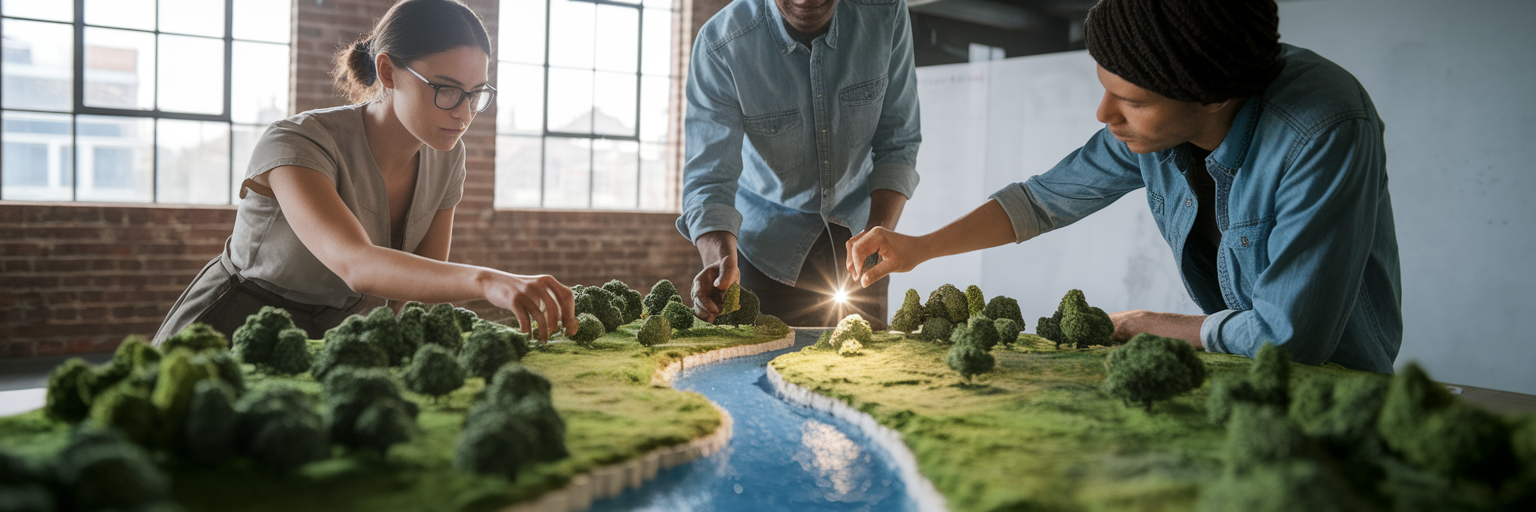
As web design evolves, so do client expectations. Businesses no longer want a simple digital brochure; they want a captivating platform that engages users and drives results. Your role as a designer now includes educating clients on the increased complexity, time, and budget that these advanced trends require. We’ve all been in that meeting where a client wants a highly interactive site on a shoestring budget. Managing expectations from the very beginning is essential for a successful project.
The best approach is to show, don't just tell. Before a project even kicks off, create a curated Bookmarkify collection of trend examples to present to your client. This helps align their vision with what's technically feasible and justifies the investment in a more sophisticated experience. Set your project up for success from day one—see how Bookmarkify can streamline your entire creative and client management process.
